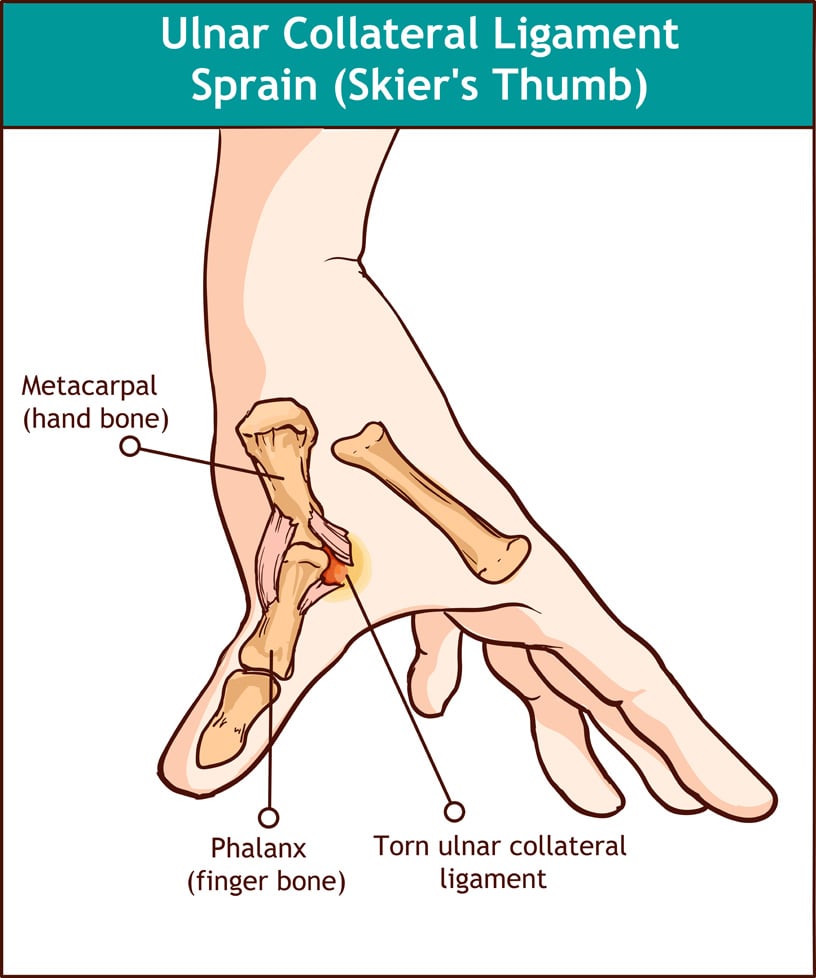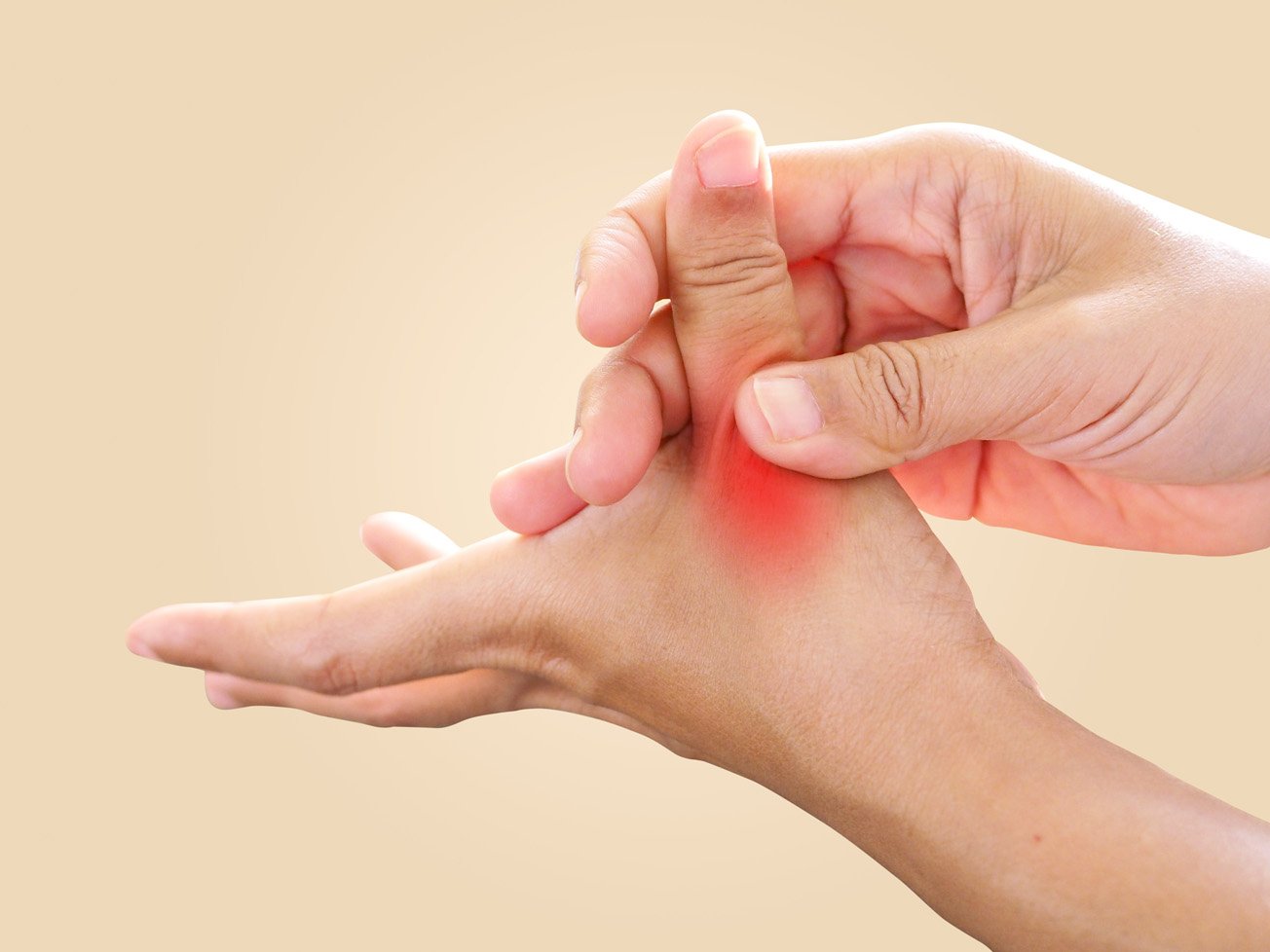UCL Injuries (Gamekeeper's or Skier's Thumb)
Thumb ligament injuries are common. The most common injury occurs to the ligaments at the joint located at the base of the thumb called the MP joint. When the thumb is forcefully bent sideways away from the rest of the hand, it can tear a ligament called the ulnar collateral ligament (UCL). The torn ligament makes gripping and pinching painful, and joint instability can lead to arthritis over time. This is the type of injury that occurs when gripping a ski pole that gets stuck, hence the name skier’s thumb. Chronic UCL injuries are called gamekeepers thumb.

Causes
Any significant trauma that causes the thumb to forcefully bend to the side away from the hand can cause a tear of the UCL. Sometimes it is more of “jamming” type injury. It is a very common sports injury.
Signs and Symptoms
Symptoms of thumb UCL injuries usually include one or more of the following:
- Pain and tenderness over the joint at the base of the thumb
- Thumb joint swelling / stiffness / bruising
- Sensation of weakness or “giving way” of the thumb when pinching or gripping
Is There a Test For Thumb UCL Injuries?
Yes! Often thumb UCL injuries can be detected on physical exam, and special x-rays called stress views can also help to confirm the diagnosis. These will also show if arthritis is present. Occasionally and MRI is ordered to visualize if the torn ligament.
Treatment
Treatment recommendations depend on injury severity, timing, and whether or not arthritis is present in the joint. Patient activity level, job requirements, and preferences are also important to consider.
Nonoperative Treatment:
Splinting and casting are the mainstays of nonoperative treatment. It typically takes 4-6 weeks for the ligament to heals sufficiently for light use and may take longer before return to sports. Sometimes the ligament does not adequately heal with splinting or casting.
Operative Treatment:
Surgical treatment for recent UCL injuries typically involves repairing the torn ligament back down to the bone with suture. When the joint is still healthy, but the UCL injury is too old and scarred in to repair, a small tendon graft can be used to reconstruct the UCL ligament. When the UCL injury is very old, and the joint has become arthritic, we often recommend permanently fusing the joint, which eliminates the problem of the arthritis, but also partially limits thumb motion and takes longer to recover from. Outcomes are much better when you get the UCL injury treated within the first couple weeks, before the ligament scars in, and before arthritis sets in.

Ready to confirm a diagnosis and fix the problem or just want to learn more?
Our board-certified orthopedic hand and wrist surgeons Eric Angermeier, MD and Kyle Kokko, MD, PhD, are here to help! They can often diagnose the problem in one visit, and get you started with a treatment plan. We offer a wide variety of both nonoperative and operative treatment options.
Call today for a clinic or telehealth appointment! 854-429-4263